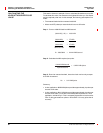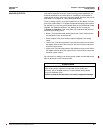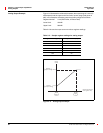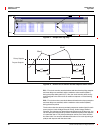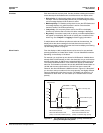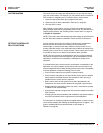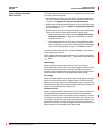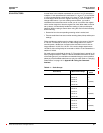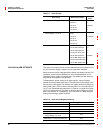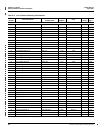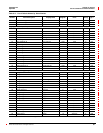
Chapter 6—Alarms 63230-300-212
Custom Alarms April 2001
© 2001 Schneider Electric All Rights Reserved
88
The circuit monitor has many pre-defined alarms, but you can also set up
your own custom alarms. For example, you may need to alarm on the ON-to-
OFF transition of a digital input. To create this type of custom alarm:
1. Select the appropriate alarm group (digital in this case).
2. Select the type of alarm (described in Table 6–4 on page 96).
3. Give the alarm a name.
After creating a custom alarm, you can configure it by applying priorities,
setting pickups and dropouts (if applicable), and so forth. For instructions on
creating custom alarms, see “Creating a New Custom Alarm” on page 19
in Chapter 3—Operation.
NOTE: The circuit monitor will automatically create alarms for the IOC44 and
the IOX when the modules are identified. These are OFF-to-ON alarms.
A circuit monitor can mimic the functions of certain motor management
devices to detect and respond to conditions such as phase loss,
undervoltage, or reverse phase relays. While the circuit monitor is not a
primary protective device, it can detect abnormal conditions and respond by
operating one or more Form-C output contacts. These outputs can be used
to operate an alarm horn or bell to annunciate the alarm condition.
NOTE: The circuit monitor is not designed for use as a primary protective
relay. While its setpoint-controlled functions may be acceptable for certain
applications, it should not be considered a substitute for proper circuit
protection.
If you determine that the circuit monitor’s performance is acceptable for the
application, the output contacts can be used to mimic some functions of a
motor management device. When deciding if the circuit monitor is acceptable
for these applications, keep the following points in mind:
• Circuit monitors require control power to operate properly.
• Circuit monitors may take up to 5 seconds after control power is applied
before setpoint-controlled functions are activated. If this is too long, a
reliable source of control power is required.
• When control power is interrupted for more than approximately 100
milliseconds, the circuit monitor releases all energized output contacts.
• Standard setpoint-controlled functions may take 1–2 seconds to operate,
in addition to the intended delay.
• A password is required to program the circuit monitor’s setpoint controlled
relay functions.
• Changing certain setup parameters after installation may operate relays in
a manner inconsistent with the requirements of the application.
For instructions on configuring setpoint-controlled alarms or relays from the
circuit monitor’s display, see “Setting Up and Editing Alarms” on page 21. The
types of available alarms are described later in this chapter in
Ta bl e 6–3 on page 94.
CUSTOM ALARMS
SETPOINT-CONTROLLED
RELAY FUNCTIONS



